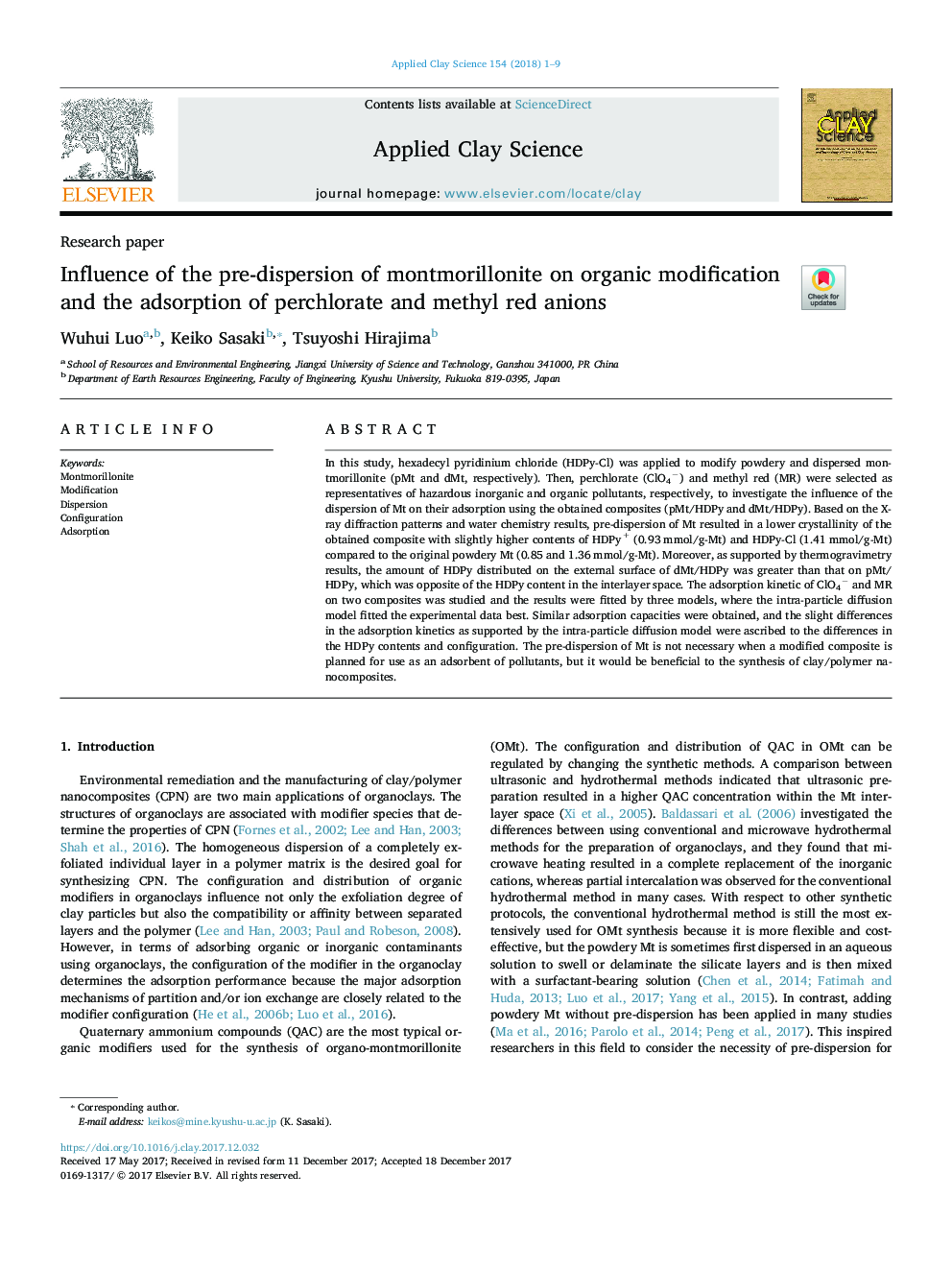| Article ID | Journal | Published Year | Pages | File Type |
|---|---|---|---|---|
| 8046157 | Applied Clay Science | 2018 | 9 Pages |
Abstract
In this study, hexadecyl pyridinium chloride (HDPy-Cl) was applied to modify powdery and dispersed montmorillonite (pMt and dMt, respectively). Then, perchlorate (ClO4â) and methyl red (MR) were selected as representatives of hazardous inorganic and organic pollutants, respectively, to investigate the influence of the dispersion of Mt on their adsorption using the obtained composites (pMt/HDPy and dMt/HDPy). Based on the X-ray diffraction patterns and water chemistry results, pre-dispersion of Mt resulted in a lower crystallinity of the obtained composite with slightly higher contents of HDPy+ (0.93Â mmol/g-Mt) and HDPy-Cl (1.41Â mmol/g-Mt) compared to the original powdery Mt (0.85 and 1.36Â mmol/g-Mt). Moreover, as supported by thermogravimetry results, the amount of HDPy distributed on the external surface of dMt/HDPy was greater than that on pMt/HDPy, which was opposite of the HDPy content in the interlayer space. The adsorption kinetic of ClO4â and MR on two composites was studied and the results were fitted by three models, where the intra-particle diffusion model fitted the experimental data best. Similar adsorption capacities were obtained, and the slight differences in the adsorption kinetics as supported by the intra-particle diffusion model were ascribed to the differences in the HDPy contents and configuration. The pre-dispersion of Mt is not necessary when a modified composite is planned for use as an adsorbent of pollutants, but it would be beneficial to the synthesis of clay/polymer nanocomposites.
Related Topics
Physical Sciences and Engineering
Earth and Planetary Sciences
Geochemistry and Petrology
Authors
Wuhui Luo, Keiko Sasaki, Tsuyoshi Hirajima,
